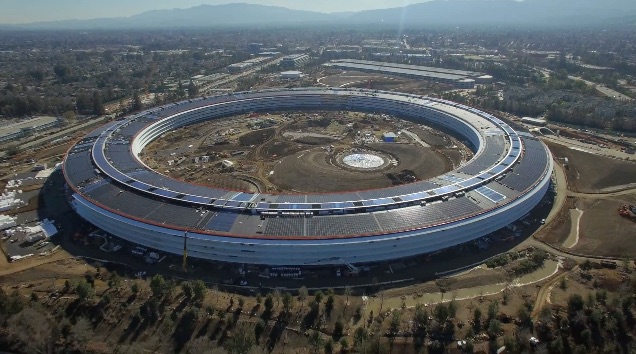Reuters on Tuesday published an informative report on the construction of Apple’s new “Spaceship Campus” in Cupertino, California. The Steve Jobs-approved design proved to be somewhat of a challenge for builders, due to the company’s “fanatical” attention to detail.

From the arrangement of electrical wiring to the finish of a hidden pipe, no aspect of the 2.8 million-square-foot main building has been too small to attract scrutiny.
But constructing a building as flawless as a hand-held device is no easy feat, according to interviews with nearly two dozen current and former workers on the project, most of whom would not be named because they signed non-disclosure agreements.
Channeling Steve Jobs
It sounds as if Apple’s new “spaceship campus” construction project has been conducted according to the same set of strict rules as the assembly of Apple’s popular devices. Guidelines for the wood to be used in the buildings alone ran to around 30 pages.
Tolerances, the distance materials may deviate from desired measurements, were a particular focus. On many projects, the standard is 1/8 of an inch at best; Apple often demanded far less, even for hidden surfaces.
The company’s keen design sense enhanced the project, but its expectations sometimes clashed with construction realities, a former architect said.
“With phones, you can build to very, very minute tolerances,” he said. “You would never design to that level of tolerance on a building. Your doors would jam.”
Project architect German de la Torre says many of the building’s features were inspired by Apple products. These include the rounded edge of a corner and elevator buttons that some say resemble the iPhone’s Home button.
One of the most vexing features was the doorways, which Apple wanted to be perfectly flat, with no threshold. The construction team pushed back, but Apple held firm.
The rationale? If engineers had to adjust their gait while entering the building, they risked distraction from their work, according to a former construction manager.
Apple’s Obsession
Apple obsession with minute features definitely set back construction on a number of areas of the project. Apple held 15 meetings with fire department personnel over the building’s signage. While the company wanted the signage to reflect a minimal aesthetic, fire department officials wanted to ensure the property could be easily navigated in case of an emergency.
The $5 billion project (of which $1 billion was dedicated to the interior of the main building alone) originally had a “move-in” target date of 2015. The completion date has slipped as the project has progressed, and it now appears employees will be carrying boxes into the complex sometime this spring.
The full Reuters report on Apple’s new “Spaceship Campus” makes for interesting reading and can be found here.


